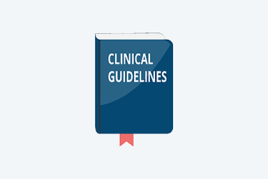6 tips for healthier looking and feeling hair from a board-certified dermatologist
ROSEMONT, Ill. (Aug. 13, 2024) — Hair is as unique as its wearer, making care an important aspect in one’s overall health and wellness routine. From understanding your hair type to learning the best shampooing technique (yes, there is one!), proper care can prevent certain types of hair loss and leave your hair looking healthier than ever.
"An optimal hair care routine isn’t just about keeping your hair looking its best,” said Deeptej Singh, MD, FAAD, a board-certified dermatologist in Albuquerque, N.M. “It also prevents damage and promotes growth, ensuring your hair stays strong and resilient.”
To keep your hair healthy and looking good, Dr. Singh and the AAD recommend following these tips:
Learn your hair type. Whether you have curly, straight, coarse, fine, or another type of hair, there are products and routines that will work for you. Choose hair care products that say they’re made for your hair type. You may see hair types described by numbers and letters, going from fine, straight hair to thick, tightly coiled hair.
Wash your hair based on how often it gets dirty or oily. If you have straight hair and an oily scalp, you may want to shampoo every day. If your hair is dry, textured, curly, or thick, shampoo when needed — at least once every 2 to 3 weeks as needed. If you see flakes in your hair, common reasons could be not shampooing frequently enough, or not using the right conditioner, oil, or scalp moisturizer for your hair type.
Apply shampoo to your scalp, instead of the entire length of your hair. This way, you cleanse and wash away built-up products, dead skin, and excess oil, but avoid drying your hair too much.
Use conditioner after washing. Conditioner moisturizes and detangles your hair and makes it easier to manage. If you have fine or straight hair, apply conditioner to the ends of your hair. However, if your hair is dry or curly, apply conditioner to the entire length of your hair.
Be gentle with your hair. Hair is delicate when it’s wet, so use a wide-tooth comb instead of a brush to detangle wet hair. Slowly comb the ends of your hair first then keep combing higher to detangle your hair with minimal damage.
If you have thick or curly hair, the best time to comb is in the shower before rinsing out your conditioner.
Wrap your hair with a towel or t-shirt to gently absorb the moisture, as roughly rubbing your hair dry can cause damage.
Protect your hair from heat — no matter your hair type, excessive heat can cause damage. Limit blow drying and use of tools like flat or curling irons. Use low or medium heat settings and a product to protect your hair from the heat.
“If you notice any issues with your hair health, a board-certified dermatologist can recommend personalized hair care routines based on a person’s hair type, scalp condition, and any underlying medical issues or conditions,” said Dr. Singh. “We can advise patients on the effectiveness and safety of various types of products and ingredients, helping them to choose the best options for their needs.”
These tips are demonstrated in “Tips for healthy hair,” a video posted to the AAD website and YouTube channel. This video is part of the AAD’s “Your Dermatologist Knows” series, which offers tips people can use to properly care for their skin, hair, and nails.
For more hair care tips and to treat hair and scalp conditions, partner with a board-certified dermatologist. To find a board-certified dermatologist in your area, visit aad.org/findaderm.
# # #
Contact
Shelby Homiston, shomiston@aad.org
Rhys Saunders, rsaunders@aad.org
Media Relations, mediarelations@aad.org
More Information
10 Hair Care Habits That Can Damage Your Hair
Hair Styling without Damage
AAD B-Roll Library
About the AAD
Headquartered in Rosemont, Ill., the American Academy of Dermatology, founded in 1938, is the largest, most influential and most representative of all dermatologic associations. With a membership of more than 21,000 physicians worldwide, the AAD is committed to advancing the diagnosis and medical, surgical, and cosmetic treatment of the skin, hair, and nails; advocating high standards in clinical practice, education and research in dermatology; and supporting and enhancing patient care because skin, hair, and nail conditions can have a serious impact on your health and well-being. For more information, contact the AAD at (888) 462-DERM (3376) or aad.org. Follow @AADskin on Facebook, TikTok, Pinterest and YouTube and @AADskin1 on Instagram.
Editor’s note: The AAD does not promote or endorse any products or services. This content is intended as editorial content and should not be embedded with any paid, sponsored or advertorial content as it could be perceived as an AAD endorsement.
 Find a Dermatologist
Find a Dermatologist
 Member directory
Member directory
 AAD Learning Center
AAD Learning Center
 2026 AAD Annual Meeting
2026 AAD Annual Meeting
 Need coding help?
Need coding help?
 Reduce burdens
Reduce burdens
 Clinical guidelines
Clinical guidelines
 Why use AAD measures?
Why use AAD measures?
 Latest news
Latest news
 New insights
New insights
 Physician wellness
Physician wellness
 Joining or selling a practice?
Joining or selling a practice?
 Promote the specialty
Promote the specialty
 Advocacy priorities
Advocacy priorities
